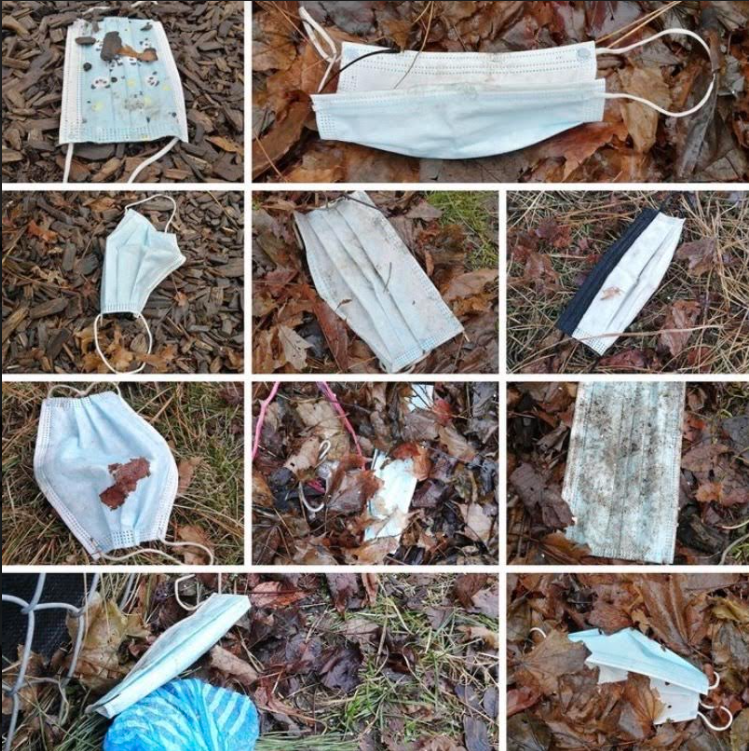GUELPH - Early into the pandemic, Shoshanah Jacobs, a biology professor at the University of Guelph, saw an unfamiliar item fly right onto her front lawn.
It was light, made out of microfiber and foretold a challenge we would face as the pandemic progressed, one of discarded PPE.
“I was like ‘What is this?!’ And then I realized this was something completely new to our environment,” said Jacobs, principal investigator in a U of G study titled An emerging source of plastic pollution which examines the improper disposal of PPE.
“The part that shook me was ‘How do I get rid of this? I don't even want to touch it.’”
Jacobs launched the study with two U of G graduates, Justine Ammendolia and Jacquelyn Saturno, environmental scientists based in Toronto who also noticed a large amount of PPE in their west Toronto neighbourhood this past spring. Their study was recently published in the journal Environmental Pollution.
The students in charge of collecting the data focused on two residential neighbourhoods, two grocery store parking lots, a hospital district and a walking trail. They would take daily evening walks for five weeks from late May through June and recorded their finds on a Marine Debris Tracker app to mark locations, dates, times, and types of litter.
In the five weeks, they found 1,300 pieces of discarded PPE over an area equivalent to about 50 football fields, something Ammendolia, a U of G zoology grad, deemed “extremely alarming.”
They found the most PPE litter in areas where people tend to go in and out of such as grocery stores, parking lots, areas around hospitals, residential streets and trails.
Out of the total 1,300 items, disposable gloves made up 44 per cent of the debris, face masks made up 31 per cent and disinfectant wipes made up 25 per cent.
“For two people walking daily to find 1,300 pieces of PPE is extremely alarming. Imagine it on a global level,” said Ammendolia.
Jacobs said at the same rate, discarded PPE in the study area alone would add up to over 14,000 items a year.
“One of the probable conclusions of this is people aren't sure how to dispose of this. They don't know, they don't want to touch it. They don't want to go anywhere that concentrates it like a bin,” said Jacobs adding that the most surprising find was the number of gloves discarded.
“That wasn't really discussed by government agencies. People weren't recommending gloves but still, people were wearing them.”
Jacobs said right now, PPE goes into general waste where municipal waste systems can handle it. Hospitals have a separate waste stream for disposable PPE where it gets burned and managed.
They said PPE litter collecting in public spaces during the COVID-19 pandemic points to a need for better disposal methods and education about handling PPE.
Jacobs said masks, gloves and hand wipes pose a danger to the environment because they are largely composed of plastic fibres and once discarded, can enter sewer systems and ultimately wash into rivers.
“Though they are now macro plastics, they will eventually become microplastics as the environment breaks them down and they will enter our environment, our terrestrial environment, our freshwater systems and ultimately our oceans in a way that joins the conversation about the detrimental effects of microplastics in our world,” said Jacobs.
The ongoing study is currently collecting data that would suggest if discarded PPE is a global problem.
“We have citizen scientists going and collecting in Argentina or in Germany or France and we’re trying to get more and more countries represented to find out whether there are these differences or is this a massive global effect,” said Jacobs about the study looking into six countries globally along with a few Canadian cities.
“And then of course we’re going to look at whether or not there are some places that have less of an effect, what are they doing, how do they manage the municipal waste, what is contributing to that decrease and what we can learn from it.”
